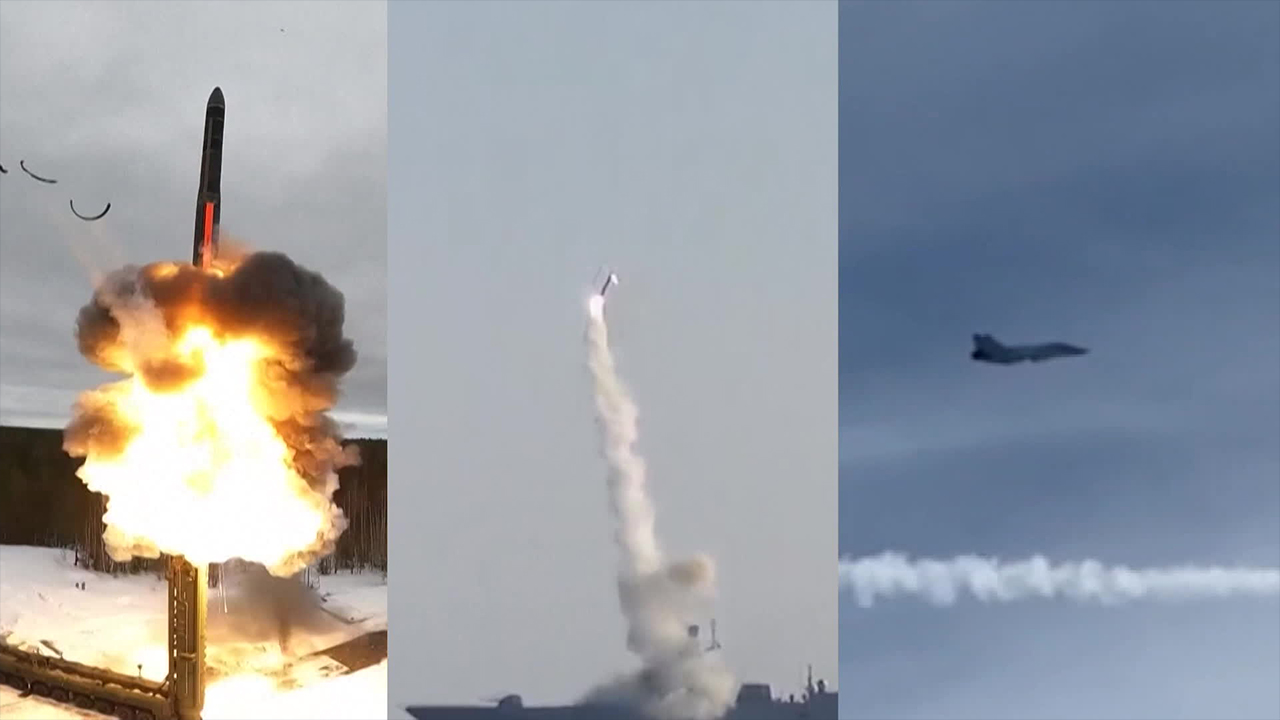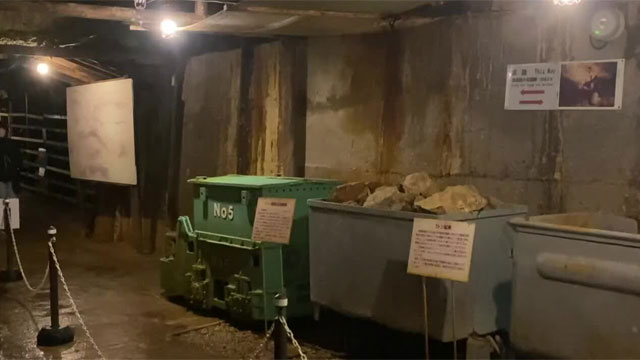Russia's hypersonic missiles spark arms race fears amid US transition
입력 2024.11.22 (23:42)
읽어주기 기능은 크롬기반의
브라우저에서만 사용하실 수 있습니다.
[Anchor]
Concerns are rising that Russia's deployment of new hypersonic missiles could reignite an arms race.
However, with the change in the U.S. administration being the biggest variable, there are also suggestions that Russia may be open to negotiations.
Reporter Park Seok-ho has the details.
[Report]
In February, Russia used the hypersonic missile Zircon, launched from the sea, to strike Kyiv, Ukraine.
Another hypersonic missile, Kinzhal, which can be launched from fighter jets, has also been deployed in this war.
[Konashenkov/Russian Defense Ministry Spokesperson/Mar. 2022: "The hypersonic missile Kinzhal destroyed an underground storage facility where Ukrainian missiles and ammunition were kept."]
Moreover, they have also used a new ground-launched hypersonic missile, Oreshnik, in response to Western missiles.
They boast that it is difficult to defend against these various hypersonic missiles, which can also be equipped with nuclear warheads and can be operated across land, sea, and air.
These hypersonic missiles have a range of 1,000 to 5,000 km, allowing them to directly strike NATO countries in Europe, but they cannot reach the United States.
While strongly warning European countries against supporting Ukraine, there are interpretations that they have left the door open for negotiations with a potential Trump administration in the U.S.
[Vladimir Putin/Russian President: "Russia has always preferred peaceful resolution of conflicts and is still ready for that."]
However, there are concerns that if a ceasefire is not achieved even after the inauguration of a second Trump administration, a new nuclear arms race, including the development of hypersonic missiles, may begin.
Russia has already withdrawn its ratification of the Comprehensive Nuclear Test Ban Treaty last year, and President-elect Trump also declared the termination of the Intermediate-Range Nuclear Forces Treaty between the U.S. and Russia during his first term.
This is KBS News, Park Seok-ho.
Concerns are rising that Russia's deployment of new hypersonic missiles could reignite an arms race.
However, with the change in the U.S. administration being the biggest variable, there are also suggestions that Russia may be open to negotiations.
Reporter Park Seok-ho has the details.
[Report]
In February, Russia used the hypersonic missile Zircon, launched from the sea, to strike Kyiv, Ukraine.
Another hypersonic missile, Kinzhal, which can be launched from fighter jets, has also been deployed in this war.
[Konashenkov/Russian Defense Ministry Spokesperson/Mar. 2022: "The hypersonic missile Kinzhal destroyed an underground storage facility where Ukrainian missiles and ammunition were kept."]
Moreover, they have also used a new ground-launched hypersonic missile, Oreshnik, in response to Western missiles.
They boast that it is difficult to defend against these various hypersonic missiles, which can also be equipped with nuclear warheads and can be operated across land, sea, and air.
These hypersonic missiles have a range of 1,000 to 5,000 km, allowing them to directly strike NATO countries in Europe, but they cannot reach the United States.
While strongly warning European countries against supporting Ukraine, there are interpretations that they have left the door open for negotiations with a potential Trump administration in the U.S.
[Vladimir Putin/Russian President: "Russia has always preferred peaceful resolution of conflicts and is still ready for that."]
However, there are concerns that if a ceasefire is not achieved even after the inauguration of a second Trump administration, a new nuclear arms race, including the development of hypersonic missiles, may begin.
Russia has already withdrawn its ratification of the Comprehensive Nuclear Test Ban Treaty last year, and President-elect Trump also declared the termination of the Intermediate-Range Nuclear Forces Treaty between the U.S. and Russia during his first term.
This is KBS News, Park Seok-ho.
■ 제보하기
▷ 카카오톡 : 'KBS제보' 검색, 채널 추가
▷ 전화 : 02-781-1234, 4444
▷ 이메일 : kbs1234@kbs.co.kr
▷ 유튜브, 네이버, 카카오에서도 KBS뉴스를 구독해주세요!
- Russia's hypersonic missiles spark arms race fears amid US transition
-
- 입력 2024-11-22 23:42:13

[Anchor]
Concerns are rising that Russia's deployment of new hypersonic missiles could reignite an arms race.
However, with the change in the U.S. administration being the biggest variable, there are also suggestions that Russia may be open to negotiations.
Reporter Park Seok-ho has the details.
[Report]
In February, Russia used the hypersonic missile Zircon, launched from the sea, to strike Kyiv, Ukraine.
Another hypersonic missile, Kinzhal, which can be launched from fighter jets, has also been deployed in this war.
[Konashenkov/Russian Defense Ministry Spokesperson/Mar. 2022: "The hypersonic missile Kinzhal destroyed an underground storage facility where Ukrainian missiles and ammunition were kept."]
Moreover, they have also used a new ground-launched hypersonic missile, Oreshnik, in response to Western missiles.
They boast that it is difficult to defend against these various hypersonic missiles, which can also be equipped with nuclear warheads and can be operated across land, sea, and air.
These hypersonic missiles have a range of 1,000 to 5,000 km, allowing them to directly strike NATO countries in Europe, but they cannot reach the United States.
While strongly warning European countries against supporting Ukraine, there are interpretations that they have left the door open for negotiations with a potential Trump administration in the U.S.
[Vladimir Putin/Russian President: "Russia has always preferred peaceful resolution of conflicts and is still ready for that."]
However, there are concerns that if a ceasefire is not achieved even after the inauguration of a second Trump administration, a new nuclear arms race, including the development of hypersonic missiles, may begin.
Russia has already withdrawn its ratification of the Comprehensive Nuclear Test Ban Treaty last year, and President-elect Trump also declared the termination of the Intermediate-Range Nuclear Forces Treaty between the U.S. and Russia during his first term.
This is KBS News, Park Seok-ho.
Concerns are rising that Russia's deployment of new hypersonic missiles could reignite an arms race.
However, with the change in the U.S. administration being the biggest variable, there are also suggestions that Russia may be open to negotiations.
Reporter Park Seok-ho has the details.
[Report]
In February, Russia used the hypersonic missile Zircon, launched from the sea, to strike Kyiv, Ukraine.
Another hypersonic missile, Kinzhal, which can be launched from fighter jets, has also been deployed in this war.
[Konashenkov/Russian Defense Ministry Spokesperson/Mar. 2022: "The hypersonic missile Kinzhal destroyed an underground storage facility where Ukrainian missiles and ammunition were kept."]
Moreover, they have also used a new ground-launched hypersonic missile, Oreshnik, in response to Western missiles.
They boast that it is difficult to defend against these various hypersonic missiles, which can also be equipped with nuclear warheads and can be operated across land, sea, and air.
These hypersonic missiles have a range of 1,000 to 5,000 km, allowing them to directly strike NATO countries in Europe, but they cannot reach the United States.
While strongly warning European countries against supporting Ukraine, there are interpretations that they have left the door open for negotiations with a potential Trump administration in the U.S.
[Vladimir Putin/Russian President: "Russia has always preferred peaceful resolution of conflicts and is still ready for that."]
However, there are concerns that if a ceasefire is not achieved even after the inauguration of a second Trump administration, a new nuclear arms race, including the development of hypersonic missiles, may begin.
Russia has already withdrawn its ratification of the Comprehensive Nuclear Test Ban Treaty last year, and President-elect Trump also declared the termination of the Intermediate-Range Nuclear Forces Treaty between the U.S. and Russia during his first term.
This is KBS News, Park Seok-ho.
이 기사가 좋으셨다면
-
좋아요
0
-
응원해요
0
-
후속 원해요
0
















이 기사에 대한 의견을 남겨주세요.